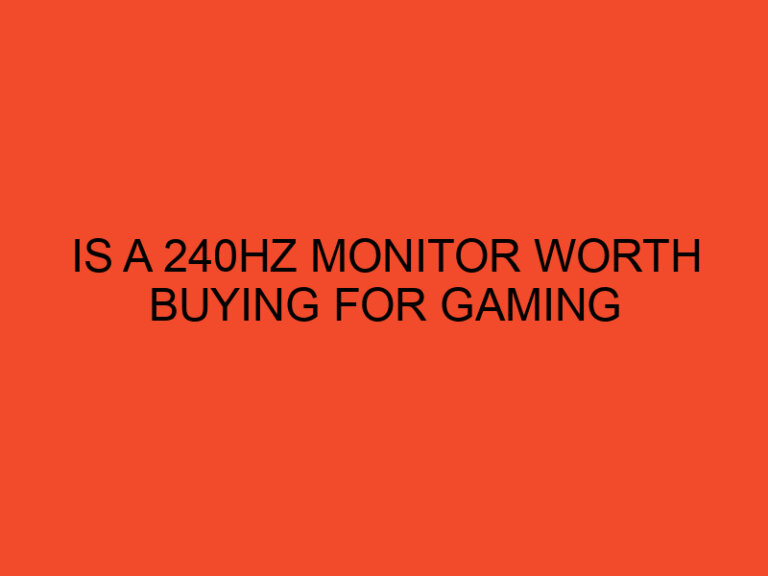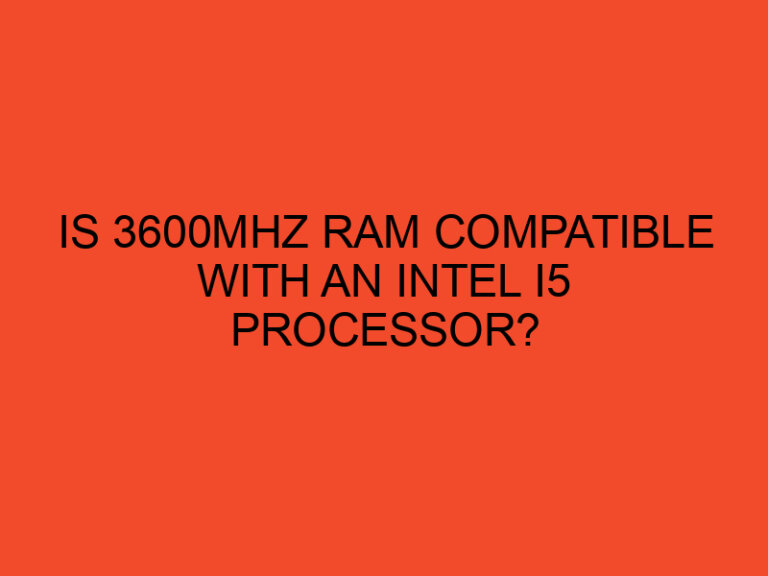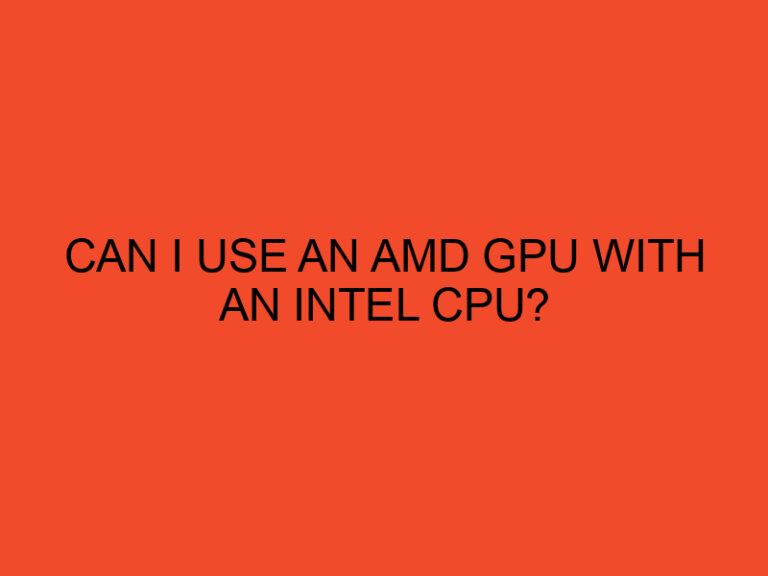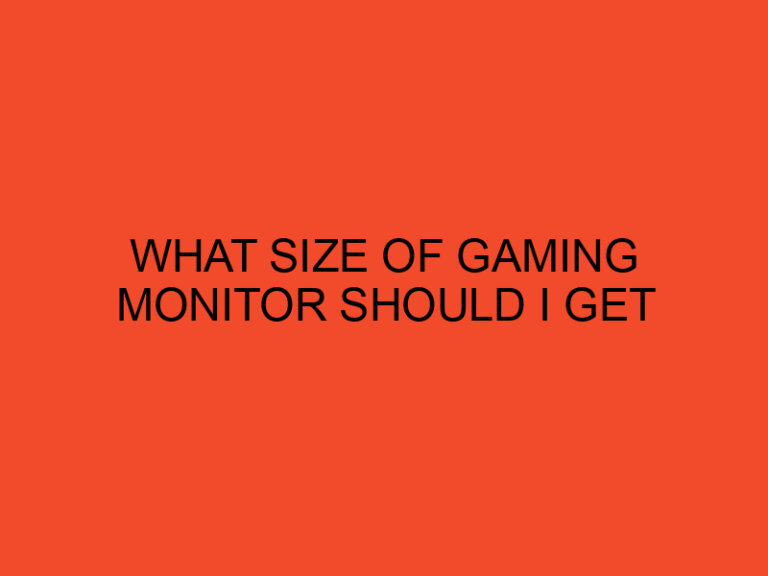GPU rendering and CPU rendering are two different methods of rendering that are commonly used in the field of 3D graphics. Both methods have their advantages and disadvantages, but the question remains, which one is faster? In this article, we will compare GPU rendering and CPU rendering to determine which method is faster and under which circumstances they are best used.
Table of Contents
Definition of CPU and GPU
A CPU (Central Processing Unit) is the primary processor in a computer that handles most of the basic arithmetic and logic operations. It is responsible for executing most of the instructions in a computer program. A GPU (Graphics Processing Unit), on the other hand, is a specialized processor designed to handle complex calculations related to 3D graphics.
The main difference between a CPU and a GPU is that a CPU has a few cores that are optimized for sequential processing, while a GPU has thousands of smaller cores that are optimized for parallel processing.
Rendering
Before diving into the comparison between GPU and CPU rendering, it is important to understand what rendering is. Rendering is the process of creating a 2D image or animation from a 3D scene. It involves calculating the position, color, and brightness of each pixel in the image or frame.
There are two types of rendering: real-time rendering and offline rendering. Real-time rendering is used in video games and other interactive applications where the image needs to be generated in real-time. Offline rendering, on the other hand, is used in movies, TV shows, and other pre-rendered animations where the image can be generated over a longer period of time.
GPU rendering vs. CPU rendering
GPU rendering and CPU rendering both have their pros and cons. GPU rendering is faster and more efficient for certain tasks, while CPU rendering is better suited for others.
Advantages of GPU rendering
The main advantage of GPU rendering is that it is much faster than CPU rendering for certain tasks. This is because GPUs are optimized for parallel processing, which means that they can perform multiple calculations simultaneously. This makes them well-suited for tasks such as real-time rendering, where speed is essential.
Disadvantages of GPU rendering
One of the main disadvantages of GPU rendering is that it requires specialized hardware. Not all computers have a dedicated GPU, and even those that do may not have a powerful enough GPU to handle certain tasks. Additionally, GPU rendering is not always accurate, especially when it comes to complex lighting and shading.
Advantages of CPU rendering
CPU rendering, on the other hand, is better suited for tasks that require high accuracy and quality, such as offline rendering. CPUs are also better at handling complex calculations that require a lot of memory and processing power.
Disadvantages of CPU rendering
The main disadvantage of CPU rendering is that it is slower than GPU rendering for certain tasks. This is because CPUs are optimized for sequential processing, which means that they can only perform one calculation at a time. This makes them less suitable for real-time rendering, where speed is essential.
When to use GPU rendering or CPU rendering
The choice between GPU rendering and CPU rendering depends on several factors, including the type of project, the software being used, and the hardware available. Generally speaking, GPU rendering is better suited for real-time rendering, while CPU rendering is better suited for offline rendering.
Factors to consider when choosing between GPU and CPU rendering
Some of the factors to consider when choosing between GPU and CPU rendering include the complexity of the scene, the number of frames that need to be rendered, the desired quality of the final output, and the amount of time available to complete the rendering.
Types of projects suitable for GPU rendering
GPU rendering is well-suited for real-time rendering tasks such as video games, interactive applications, and virtual reality experiences. It is also useful for tasks that require a lot of parallel processing, such as simulations and scientific calculations.
Types of projects suitable for CPU rendering
CPU rendering is better suited for tasks that require high accuracy and quality, such as movie and TV show production, architectural visualization, and product design. It is also useful for tasks that require complex calculations and large amounts of memory.
Hardware requirements for GPU and CPU rendering
The hardware requirements for GPU rendering and CPU rendering vary depending on the complexity of the project and the software being used. Generally speaking, GPU rendering requires a powerful dedicated graphics card, while CPU rendering requires a powerful processor and a large amount of RAM.
Minimum and recommended hardware requirements for GPU rendering
The minimum hardware requirements for GPU rendering include a dedicated graphics card with at least 4GB of VRAM, a compatible motherboard, and a power supply that can handle the power demands of the graphics card. The recommended hardware requirements for GPU rendering include a graphics card with at least 8GB of VRAM, a powerful processor, and at least 16GB of RAM.
Minimum and recommended hardware requirements for CPU rendering
The minimum hardware requirements for CPU rendering include a powerful processor with at least 4 cores and 8 threads, at least 16GB of RAM, and a compatible motherboard. The recommended hardware requirements for CPU rendering include a processor with at least 8 cores and 16 threads, at least 32GB of RAM, and a compatible motherboard.
Software for GPU and CPU rendering
There are many software options available for both GPU rendering and CPU rendering. Some of the most popular options for GPU rendering include Octane Render, Redshift, and Arnold. Some of the most popular options for CPU rendering include V-Ray, Corona Renderer, and Maxwell Render.
Comparison of software for GPU and CPU rendering
When choosing software for rendering, it is important to consider factors such as compatibility with the hardware being used, ease of use, and the desired output quality. Some software options may be better suited for certain tasks or projects than others.
Conclusion
In conclusion, the choice between GPU rendering and CPU rendering depends on several factors such as the type of project, the software being used, and the hardware available. GPU rendering is generally faster and better suited for real-time rendering tasks such as video games, interactive applications, and virtual reality experiences. On the other hand, CPU rendering is slower but better suited for offline rendering tasks that require high accuracy and quality, such as movie and TV show production, architectural visualization, and product design.
When deciding which rendering method to use, it is important to consider the hardware and software requirements for each method, as well as the specific needs of the project. It is also important to keep in mind that GPU rendering may not always be accurate and may not be suitable for all projects.
Ultimately, the choice between GPU rendering and CPU rendering will depend on the specific needs of the project and the available resources. By carefully considering all of the factors involved, it is possible to choose the best rendering method for each individual project.
FAQs
- Is GPU rendering always faster than CPU rendering?
- No, GPU rendering is faster than CPU rendering for certain tasks, but it is not always faster overall.
- What are some factors to consider when choosing between GPU and CPU rendering?
- Some factors to consider include the complexity of the scene, the number of frames that need to be rendered, and the desired quality of the final output.
- What are some popular software options for GPU rendering?
- Some popular options include Octane Render, Redshift, and Arnold.
- What are some popular software options for CPU rendering?
- Some popular options include V-Ray, Corona Renderer, and Maxwell Render.
- Which rendering method is better for real-time rendering?
- GPU rendering is generally better suited for real-time rendering tasks such as video games, interactive applications, and virtual reality experiences.





